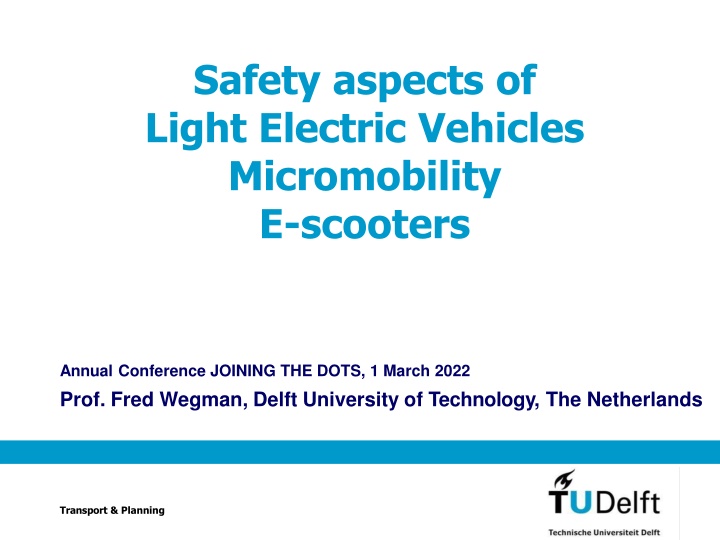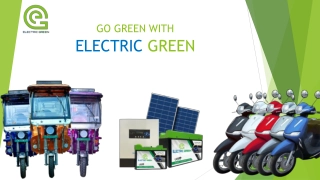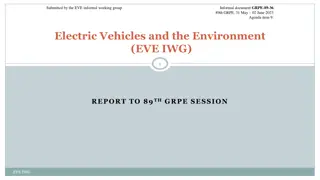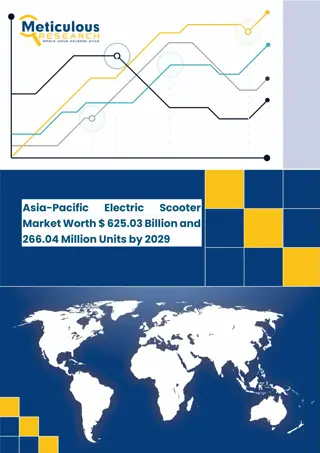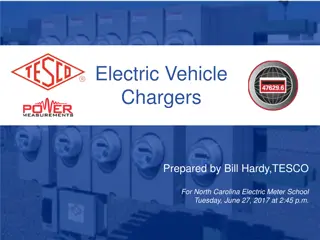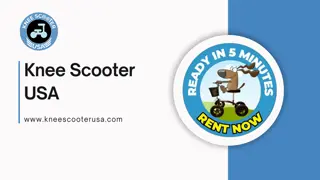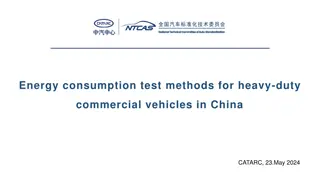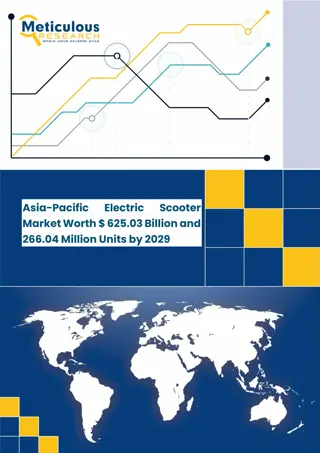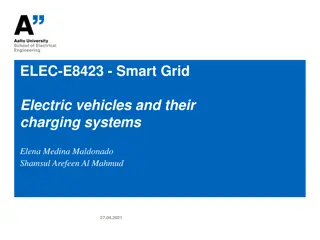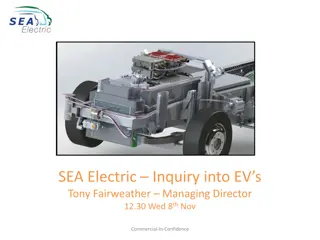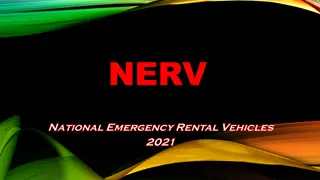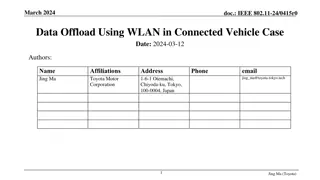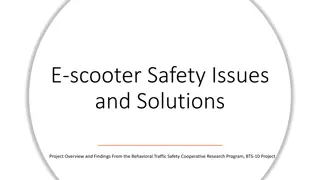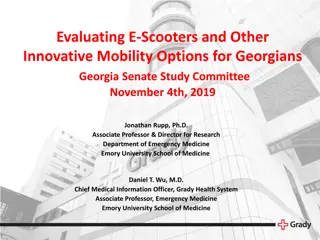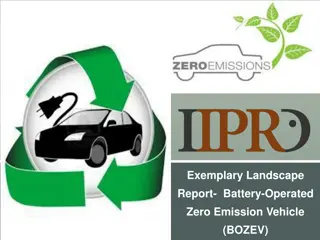Safety Aspects of Light Electric Vehicles - Micromobility & E-scooters
This content discusses safety aspects of light electric vehicles, including micromobility and e-scooters, highlighting incidents, legislative considerations, and the rise of new urban transport solutions like Light Electric Freight Vehicles (LEFVs). It also mentions the challenges and opportunities in the field of micromobility and the diverse perspectives surrounding it.
Download Presentation

Please find below an Image/Link to download the presentation.
The content on the website is provided AS IS for your information and personal use only. It may not be sold, licensed, or shared on other websites without obtaining consent from the author.If you encounter any issues during the download, it is possible that the publisher has removed the file from their server.
You are allowed to download the files provided on this website for personal or commercial use, subject to the condition that they are used lawfully. All files are the property of their respective owners.
The content on the website is provided AS IS for your information and personal use only. It may not be sold, licensed, or shared on other websites without obtaining consent from the author.
E N D
Presentation Transcript
Safety aspects of Light Electric Vehicles Micromobility E-scooters Annual Conference JOINING THE DOTS, 1 March 2022 Prof. Fred Wegman, Delft University of Technology, The Netherlands Transport & Planning
Four children died in a crash between a passenger train and a child cart (2018) Carts are being used for transport between schools and out-of-school care Police, Public Prosecutor, in-depth research: not able to assess cause(s) of the crash
As a consequence: no decisions have been made since on legislation of LEVs more new vehicle (types), but we see already high volumes of cyclists And an enormous interest in using LEFVs: Light Electric Freight Vehicles
new forms of urban transport and logistics are on their way
Light Electric Freight Vehicles (LEFVs) Freight mopeds (as very common in Low- and Middle- Income countries) are on the rise. Electric!
Light Electric Freight Vehicles (LEFVs) Cargo-bikes
Light Electric Freight Vehicles (LEFVs) Electric distribution vehicles
Mobility scooters, enclosed disability vehicles and microcars Almost 7% of all road fatalities in NL and increasing
Micromobility: Diverse, different, innovative, cheap, fun, convenient, has the future, on the rise, polarised opinions, poor data, hardly any evidence, puzzled regulators
Micro mobility: an ambiguous term, no agreed common definition International Transport Forum (2020): Personal transportation using devices and vehicles weighing up to 350 kg and whose power supply, if any, is gradually reduced and cut off at a given speed limit which is no higher than 45 km/h. SAE (Society of Automotive Engineers) International (2019): classification system consists of the micromobility vehicle type with descriptors of curb weight, vehicle width, top speed (30 m/h) and power source
Taxonomies of mircomobility from SAE and ITF differ: powered, curb- weight, vehicle width, and top speed
Questions on micromobility from a safety perspective Top speed: 20 km/h, 25 km/h, 45 km/h (speed pedelec), or faster? Personal protection by helmets? Position on the carriageway, cycle track, sidewalk? Training, licensing, age limits?
Political valuation on new and innovative modes of transport: SCBA SCBA: Social cost-benefit analysis Contribution of the fulfillment of certain social objectives SCBA is a systematic and cohesive method to survey all the impacts (costs and benefits) caused by a decision for all the actors affected The valuation of costs and benefits in SCBA is a challenge when markets may fail
Decision support tool SCBA: define all actors and dimensions Actors New and existing road users Citizens, communities
Decision support tool SCBA: define all actors and dimensions Dimensions (Sustainable Development Goals) Accessibility (people and goods) Travel time and costs/efforts Health (QUALY s) Inclusiveness and equity Safety Environmental quality (emissions, noice nuissance) Renewable and low carbon energy Built and natural environment
How to decide on legislation and regulation of LEVs/micromobility? From a safety perspective: [Fatalities = Exposure x Risks] Estimate future usage of LEVs Estimate modal split change: replacement of walking, cycling, public transport, cars Estimate risks per mode Estimate final effects Compare results with a reference/policy/target
Focus on road safety: knowledge/evidence Crash statistics Surrogate measures SPI s Experiments in simulators Trials/experiments/tests Assessments by expert opinions
E-scooters and road safety: what do we know? Little! Germany: 4.5 times riskier than bicycles Norway: 11 times riskier USA: same risk; higher risk for hospitalized/deaths Young males (20-40y), incidental and inexperienced users Alcohol (20-50%) Evening, night, weekend Single vehicle crash
Current regulations in European countries: major differences Chracteristics Age Speed Power Passengers Helmets License Insurance Alcohol limit Pavement 12 14 16y 15-20-25 km/h 250 500 1000 Watt No (excl. Belgium) No/yes (under conditions) No (excl. Poland) No/yes No/yes No/yes
NL-Principles for risk assessement for LE(F)Vs, micro-mobility, e-scooters Starting from a Safe System approach Vehicle Ergonomics, conspicuity, improper use Bio-mechanics Collision protection, crashworthiness, road position Rider/operator Experience and competences Interaction with other road users Recognizability, predictability, distraction
To conclude (I) Decision making on LEVs/micromobility asks for a wider perspective than just one mode (e-scooters) and taking into account only one dimension (safety) It is recommended to take decisions on LEVs/micromobility well fitting in policy aims of transportation, health, environment, urbanism
To conclude (II) From a safety point of view allow for low-speed LEVs, protect pedestrians, children and elderly/handicapped Although we face limited knowledge we have to make decisions; I recommend to use tests + expert opinions and to monitor implementation to detect risks Proportionate regulations for LEVs/micromobility resp. e-scooters is needed; it is not to be expected that similar solutions will be optimal for different settings
To conclude (III) If we would like to substitue car/carbon-kilometres by non-carbon kilometres now, it would be better from a safety point of view - to go for walking and cycling than for other forms of micromobility Active modes of transport will be supported by the health sector
Thank you very much for your attention For more information f.c.m.wegman@tudelft.nl
